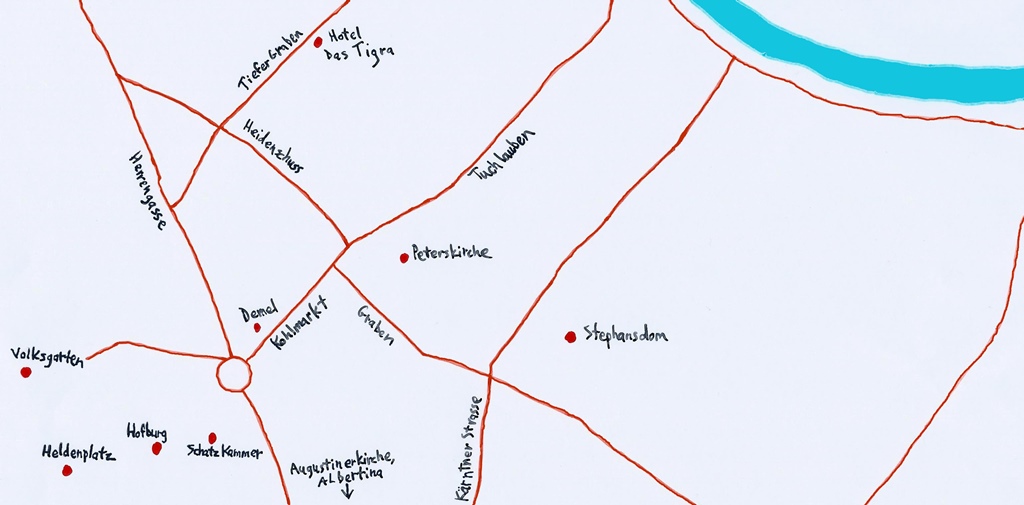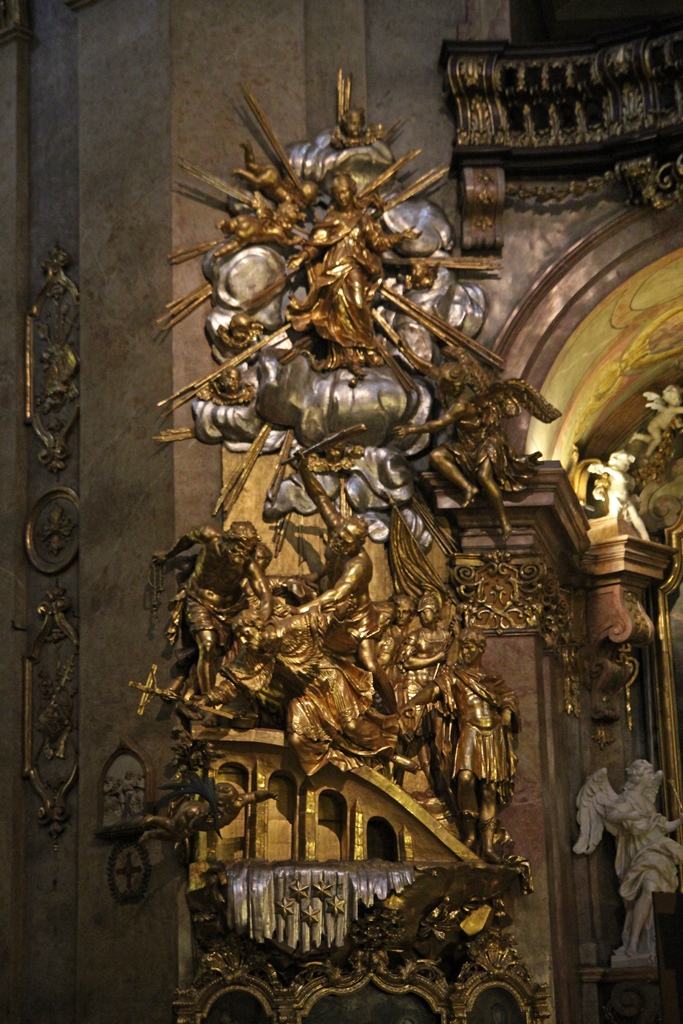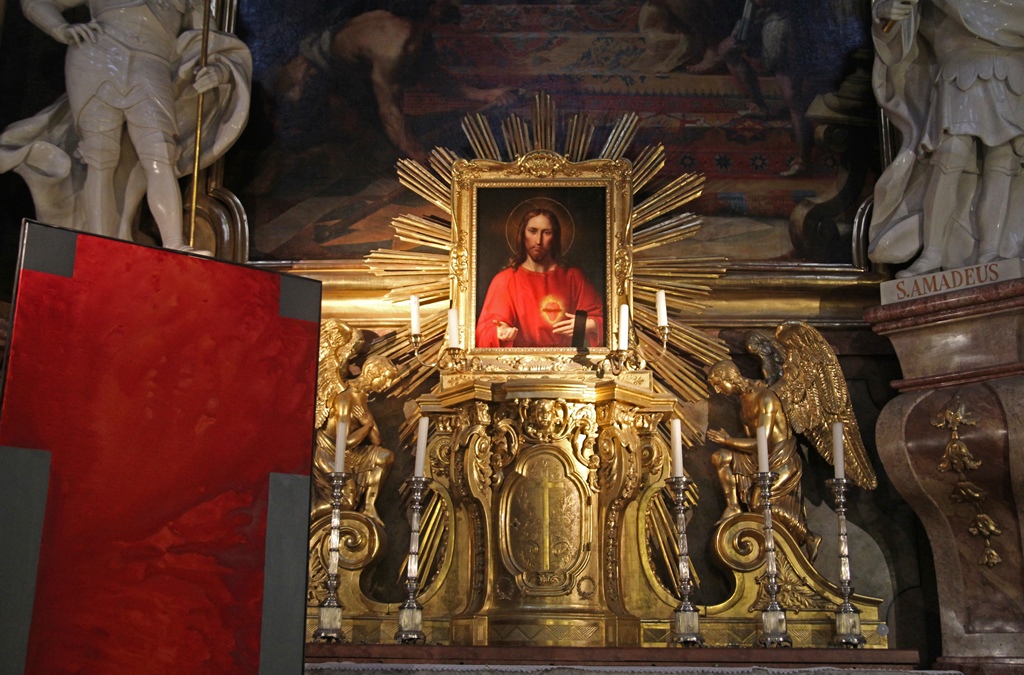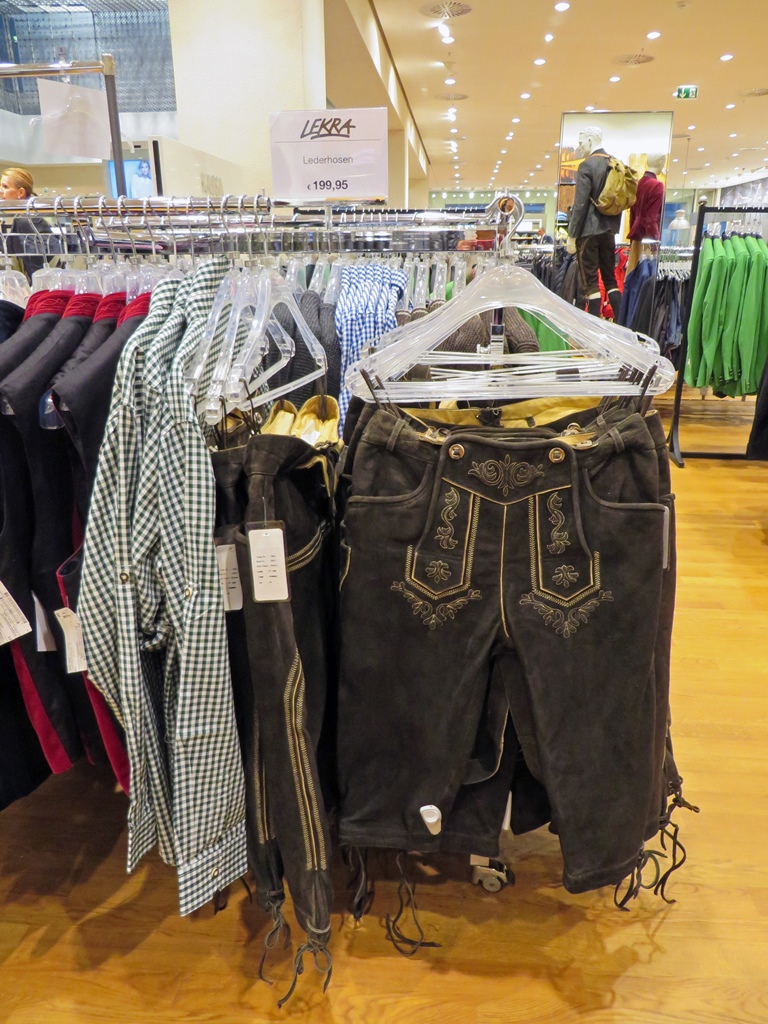Our objective for closing out our first evening in Vienna was a visit to St. Peter's
Church, known to the locals as the Peterskirche. The Peterskirche wasn't far
from the Demel bakery and chocolate shop, where we'd just finished an afternoon
snack. To get there, we headed back along Kohlmarkt, the pedestrianized street
where Demel was, and turned right onto another pedestrianized street called Graben.
Major Streets, Old Town
The origins of the Graben go all the way back to when Vienna was a Roman outpost
called Vindobona. Vindobona was protected by walls, and outside the southwestern
wall, as an additional defensive feature, there was a trench (the meaning of the
German word graben). The trench remained in place into the early Middle
Ages, but in the 12th Century, the ruling dukes of the Babenberg Dynasty came
into some money via the ransoming of Richard the Lionheart (see the
Vienna Introduction page for more on this) and
expanded the city, building new walls beyond the existing ones. The old trench
was filled in and levelled, and became a new street. For many years the Graben
was a natural marketplace surrounded by residential structures, but in time it
became a fashionable promenade, surrounded by upscale residences and shopping
establishments. In the 20th Century the Graben became busy with auto traffic,
but in 1974 this was discontinued, when the Graben became Vienna's first
pedestrian zone.
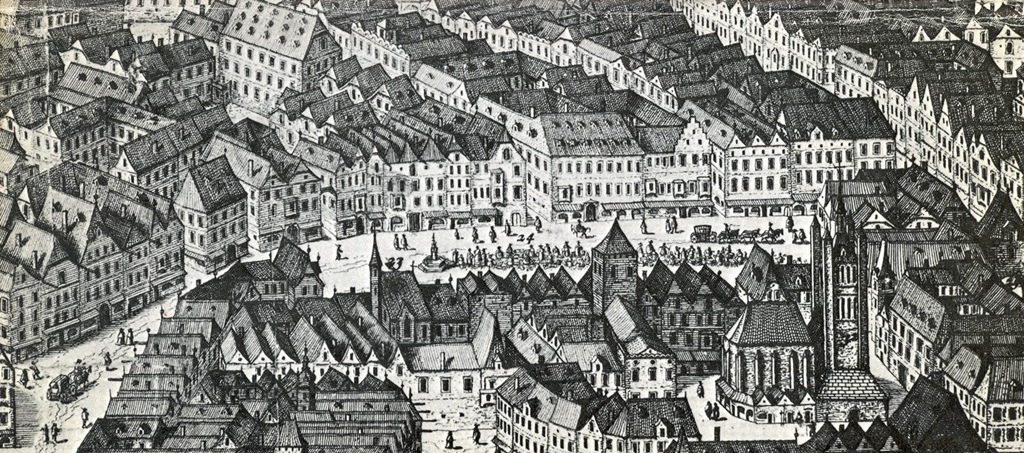
The Graben in 1609, From the North (J. Hoefnagel)
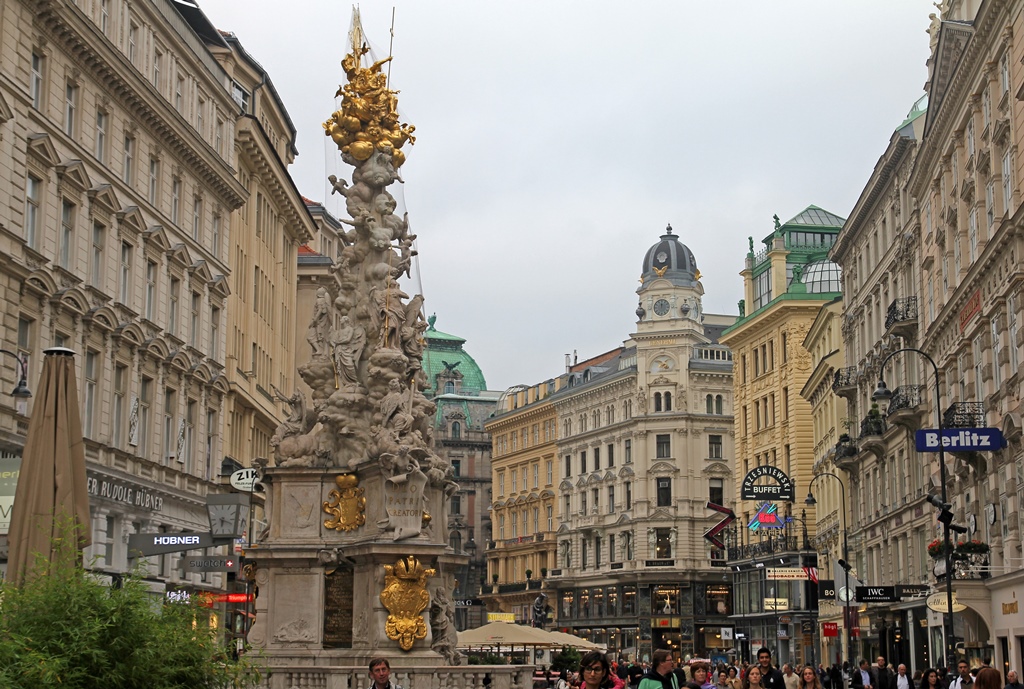
The Graben in 2014
Probably the most distinctive structure in the Graben is the 69-foot baroque
Plague Column, or Pestsäule (pest-zoyleh). The Pestsäule was built to
commemorate the city's survival of a 1679 plague which killed nearly a third of
the population. The Habsburg emperor Leopold I ordered the building of the
column (he didn't actually participate in the plague, hastily leaving town for
the duration), which wasn't completed until 1693. The column is pretty
complicated, but is essentially divided between a lower earthly section with
inscriptions and coats of arms and a small number of figures (including a
praying Leopold), and an upper heavenly section with many angelic figures
perched in an especially cloudy version of heaven, with a gilded Holy Trinity
at the top. Several artists were involved, but the project ended up being
managed by a man named Paul Strudel.
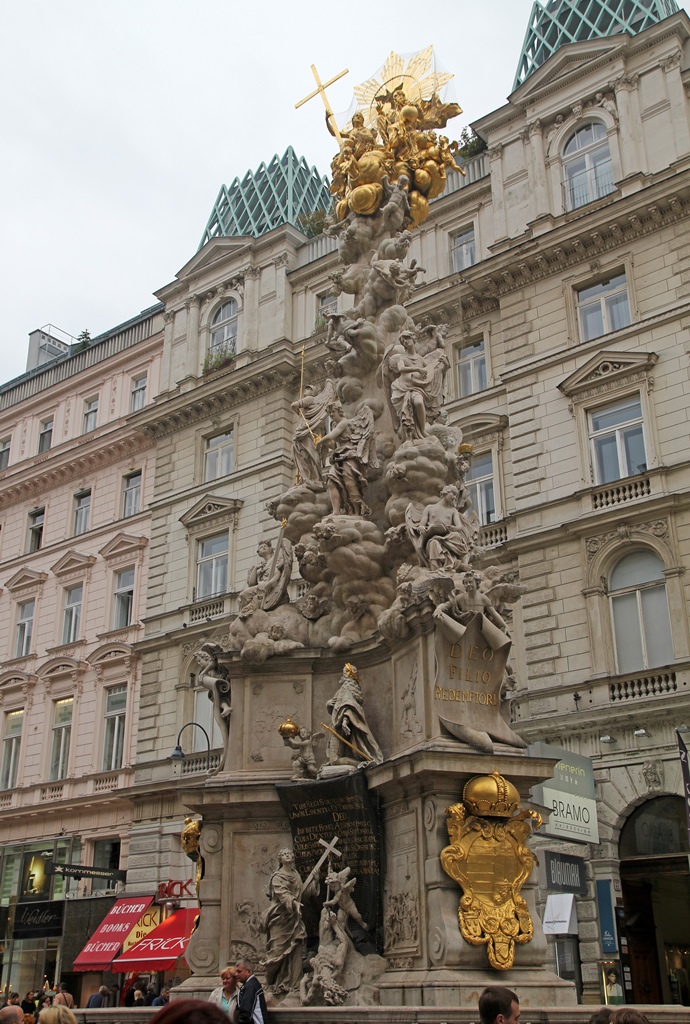
Pestsäule
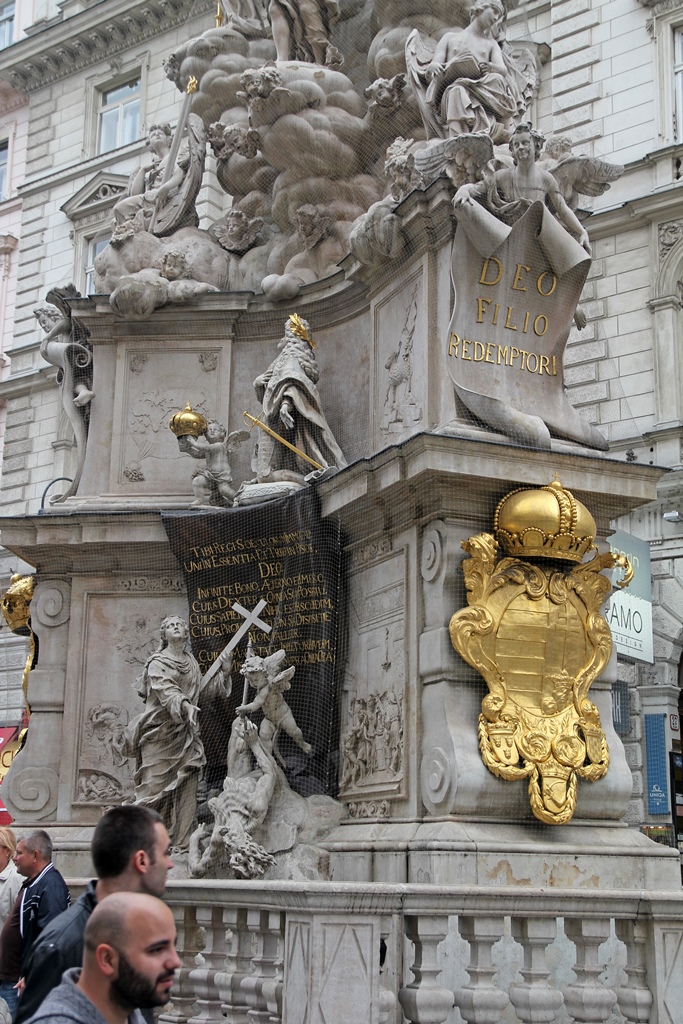
Pestsäule Base
But the Graben on this evening was for us a means to an end, the end being the
Peterskirche. In the 1609 depiction of the Graben seen above, besides the absence
of the Pestsäule (which hadn't been built yet), you might notice a church on the
right, somewhat to the north of the Graben. This Peterskirche is thought to have
been built in the 12th Century or earlier, but it was destined to burn down in
1661. Besides having the Pestsäule constructed as a result of the 1679 plague,
Leopold I also vowed to have the Peterskirche rebuilt. He lived to see the
construction begin in 1701, but it wasn't completed until 1733, during the reign
of his son, Charles VI.
The Peterskirche is reached from the Graben via a very short street called
Jungferngasse, a little to the west of the Pestsäule. The church itself
is shoehorned into a fairly small area known as Petersplatz, which it
fills completely. Because of the surrounding buildings, it's impossible to see
all of the church from ground level at once, but it's tall and generally oval in
shape, with a large green dome. We headed inside to see what there was to see.
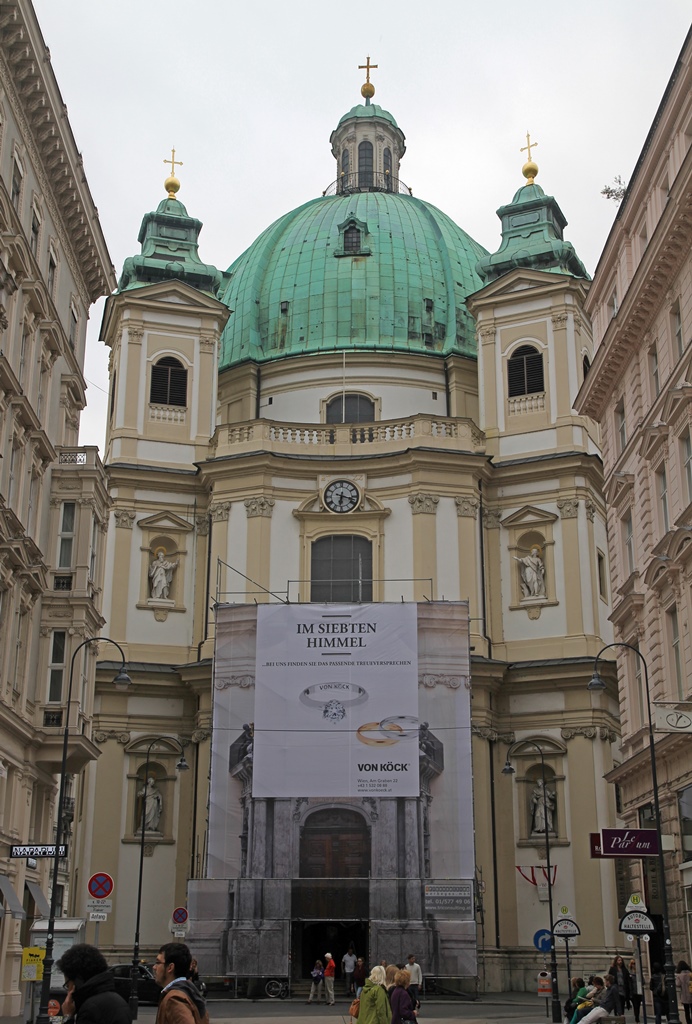
St. Peter's Church from Jungferngasse
At only 160 feet long and 66 feet wide, the Peterskirche is not a large church,
but its chief architect, Johann Lukas von Hildebrandt, and several painters,
sculptors and designers contrived to fill it with as much baroque as humanly
possible. Starting with the main altar, which is highlighted by a painting
featuring Saints Peter and Paul, by the baroque Italian painter Martino
Altomonte.
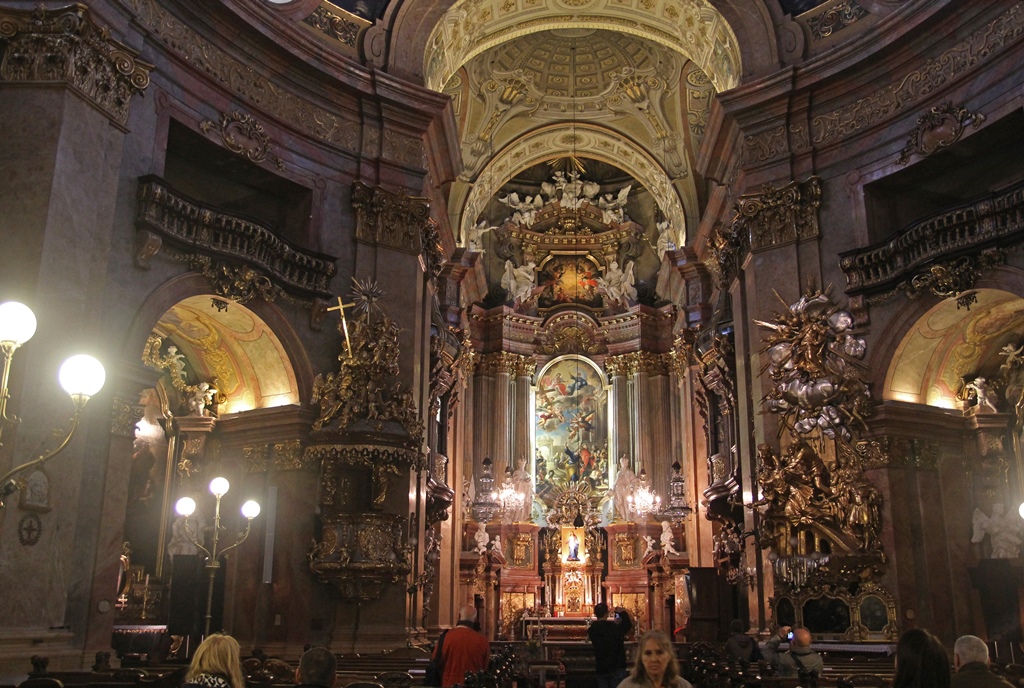
Inside St. Peter's Church
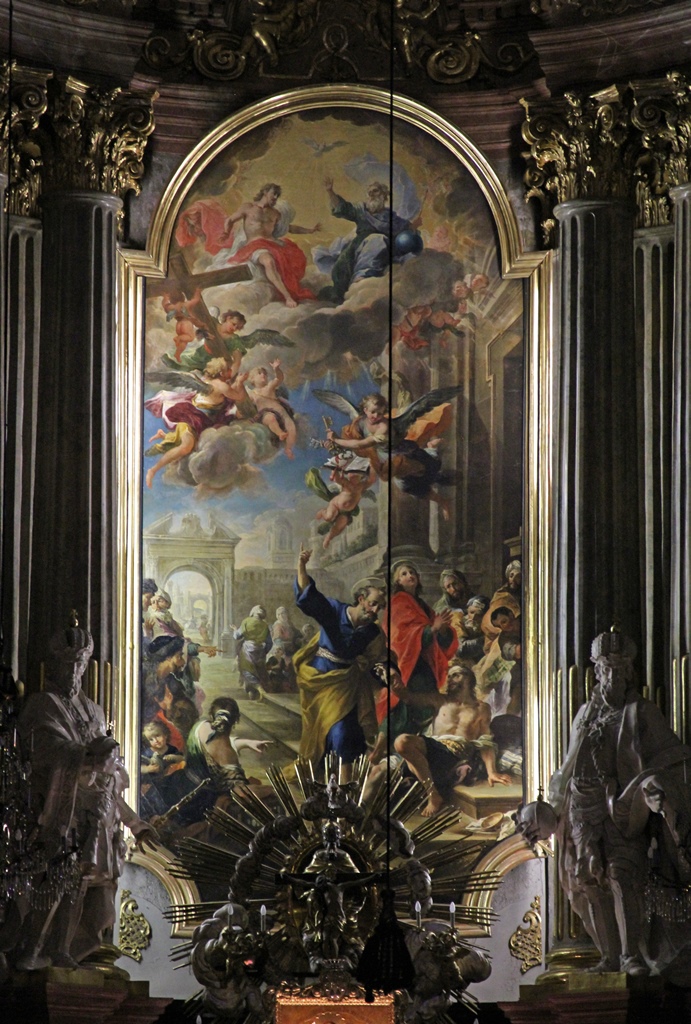
Healing of the Lame by St. Peter and St. John in Jerusalem
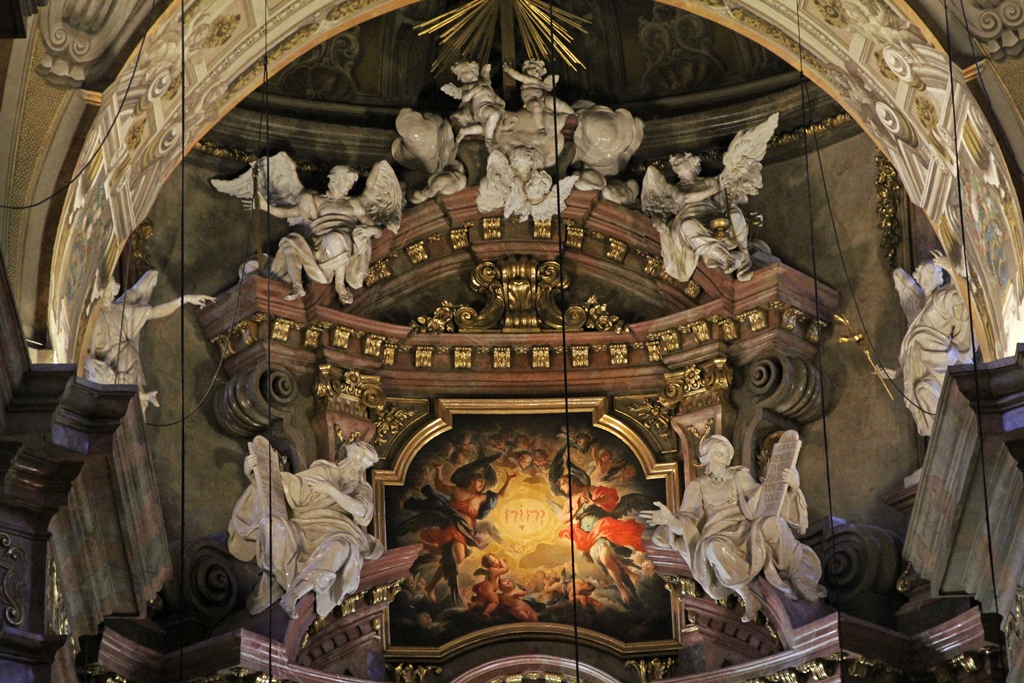
Decorations Above Main Altar
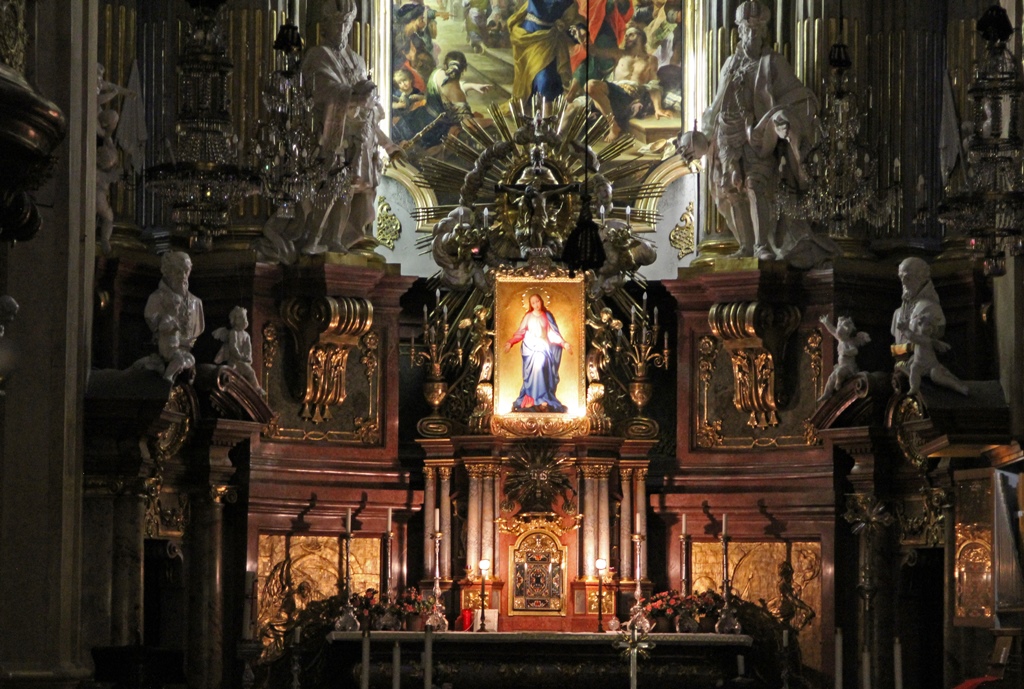
Main Altar
The inside of the 177-foot-high dome is covered with a fresco by J.M. Rottmayr
which depicts the Coronation of the Virgin.
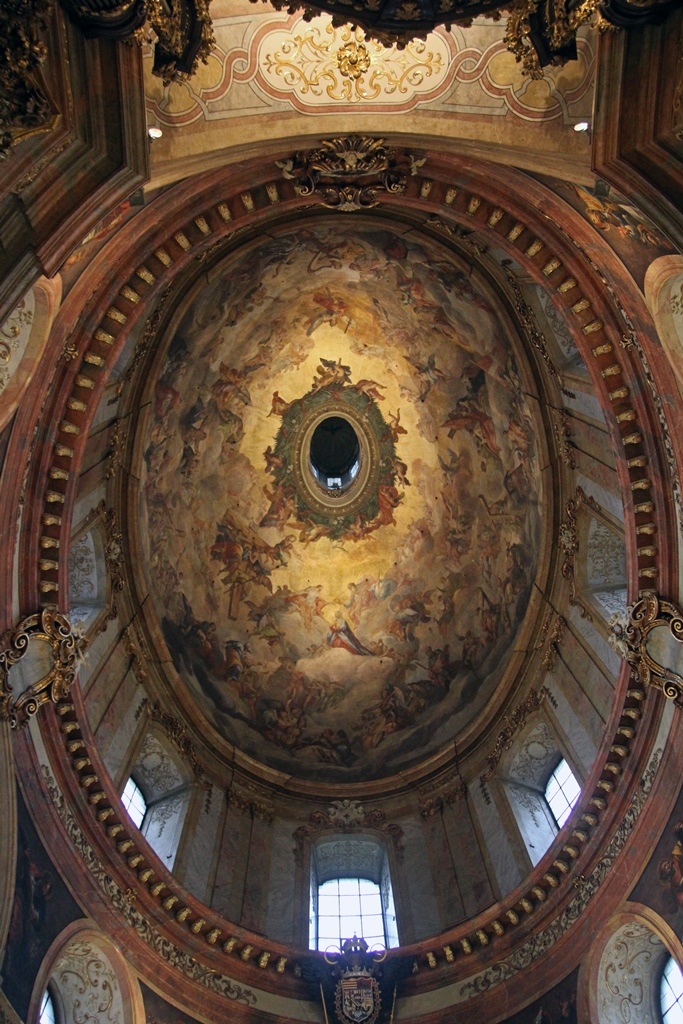
Dome Fresco - Coronation of Our Lady
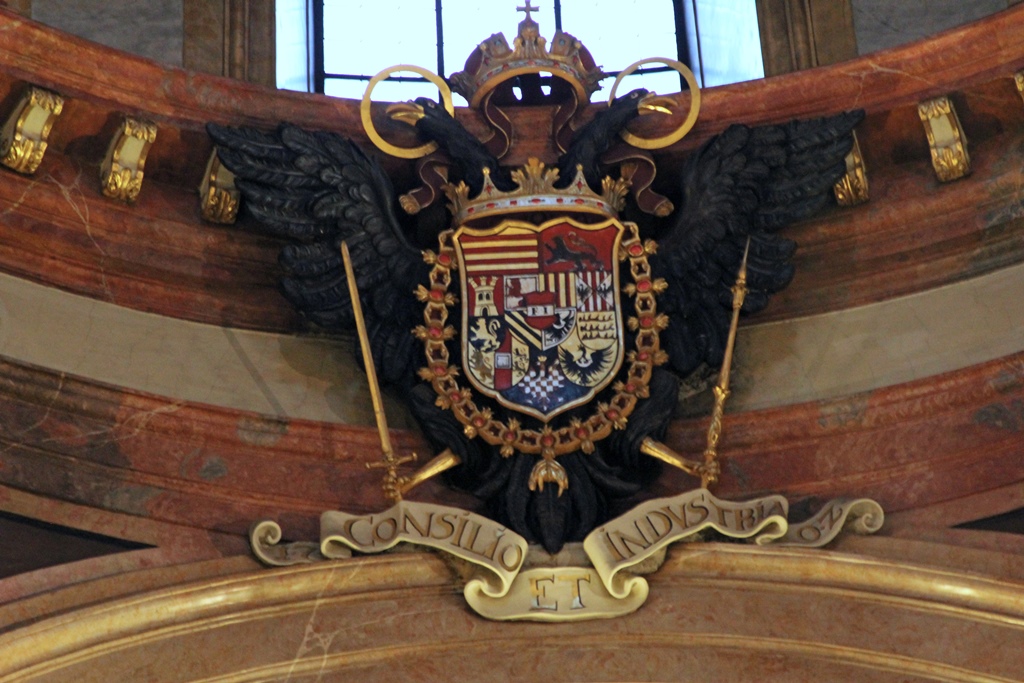
Coat of Arms of Emperor Leopold I
The gilded pulpit, sculpted by Matthias Steinl, is particularly ornate, with a canopy
depicting the Holy Trinity.
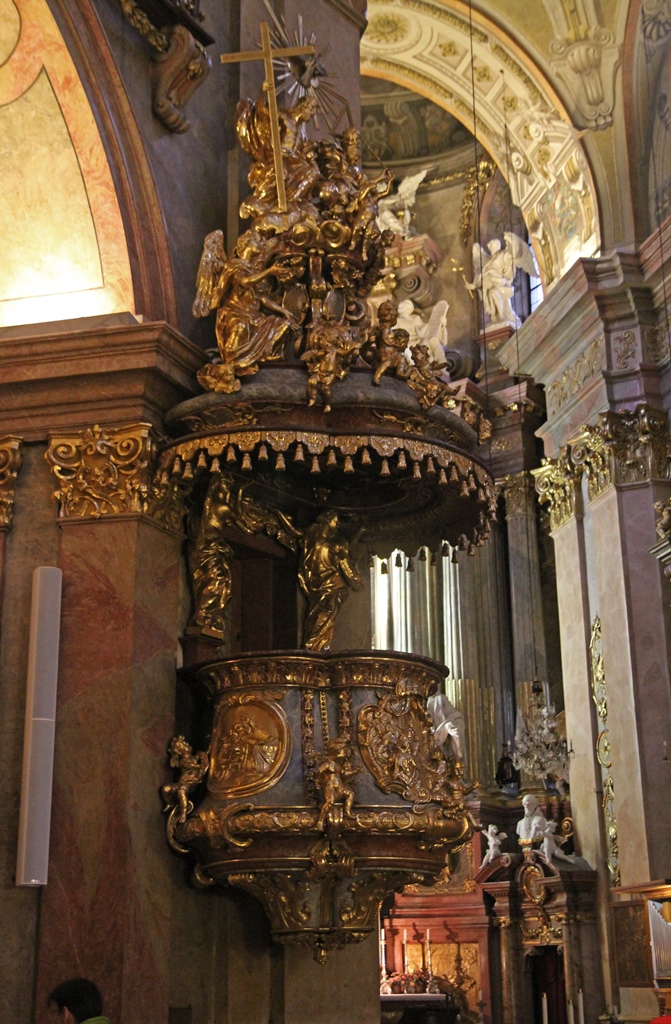
Pulpit
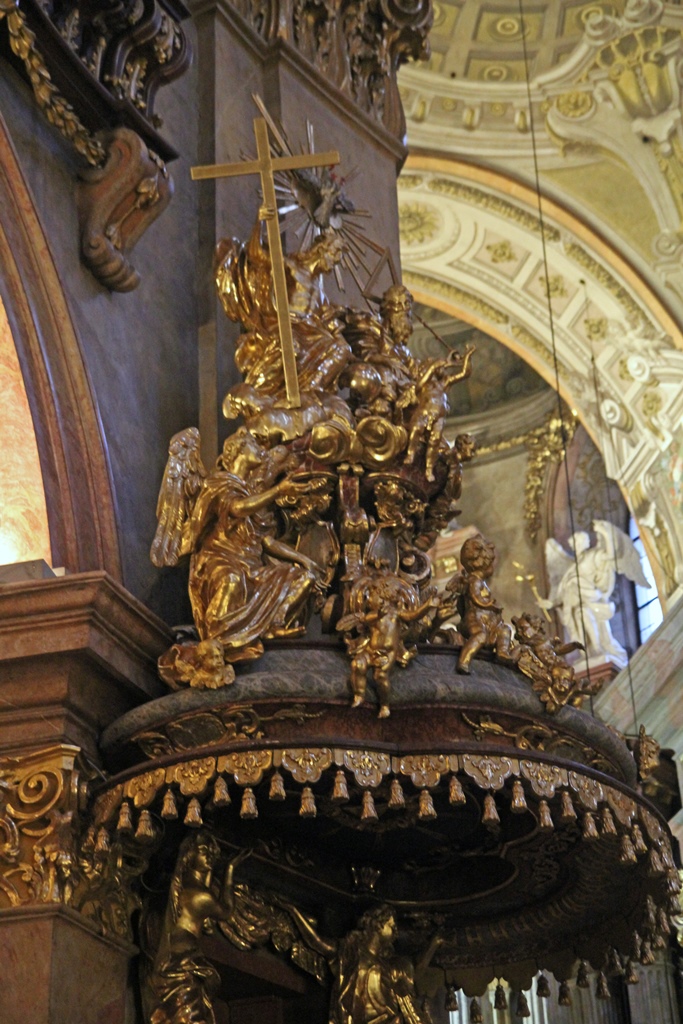
Pulpit Canopy
The extreme ornamentation continues to other features common to Catholic churches.
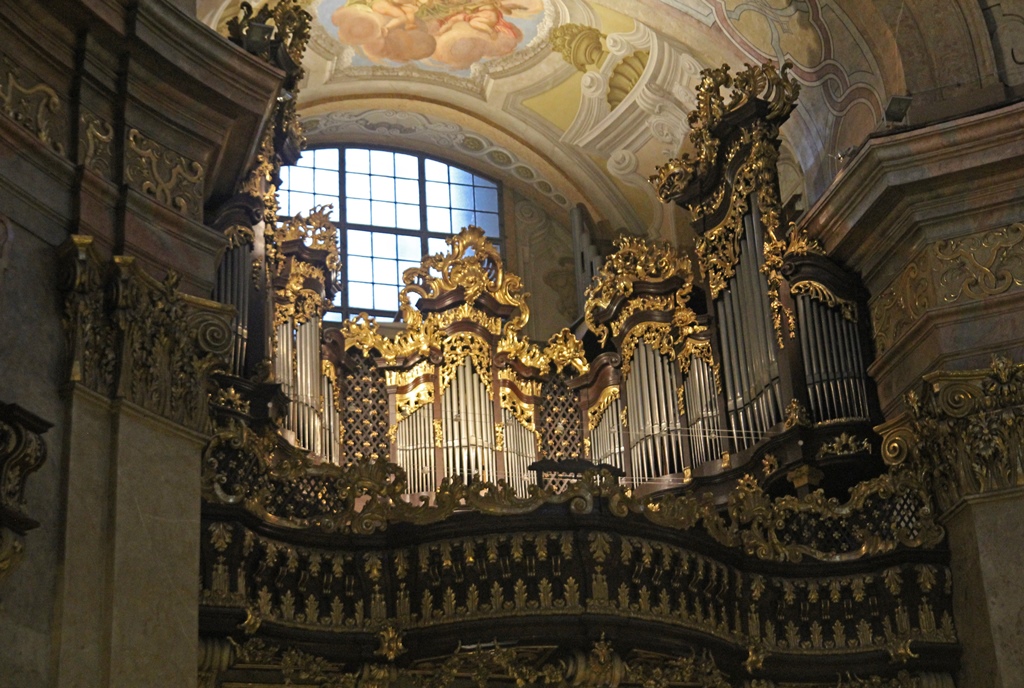
Organ
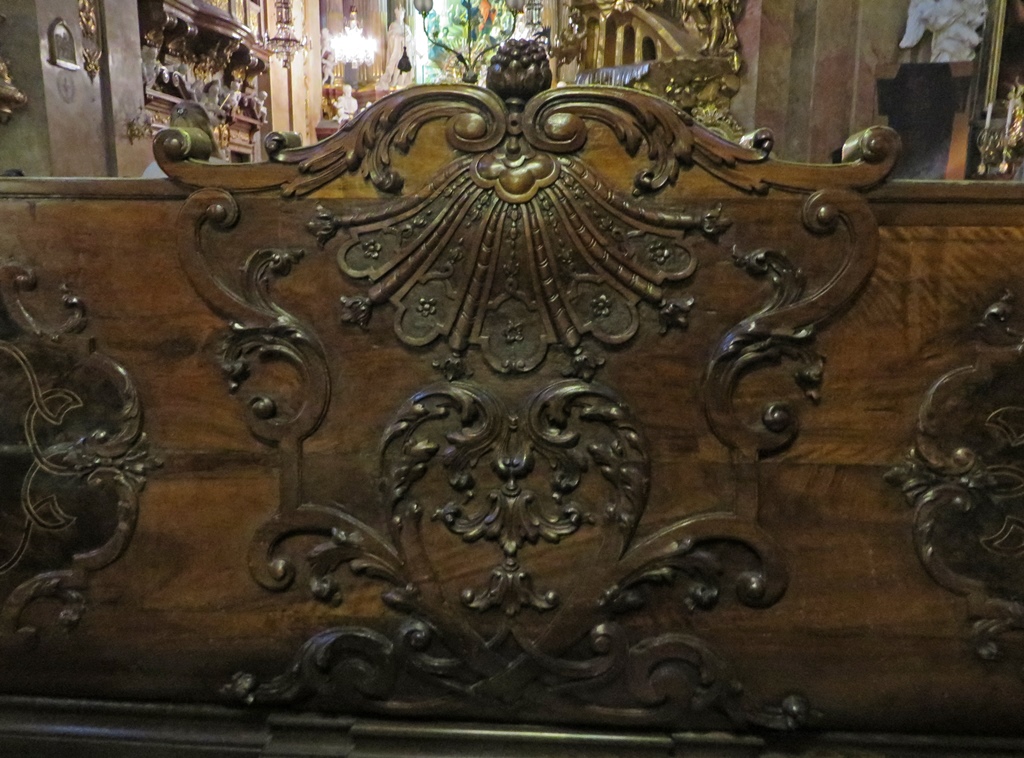
Carved Pew
Across from the pulpit is a dramatic sculpture, by Lorenzo Mattielli, of the
Martyrdom of St. John Nepomuk, topped by a sculpted Our Lady of Bunzlau.
Martyrdom of St. John Nepomuk, Lorenzo Mattielli
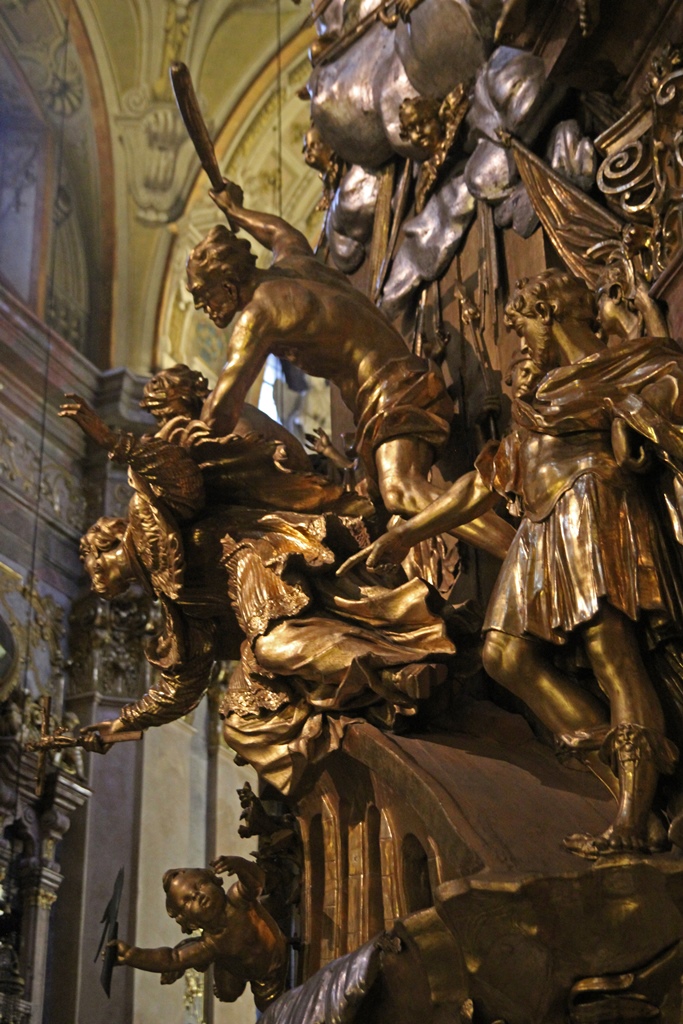
Martyrdom of St. John Nepomuk
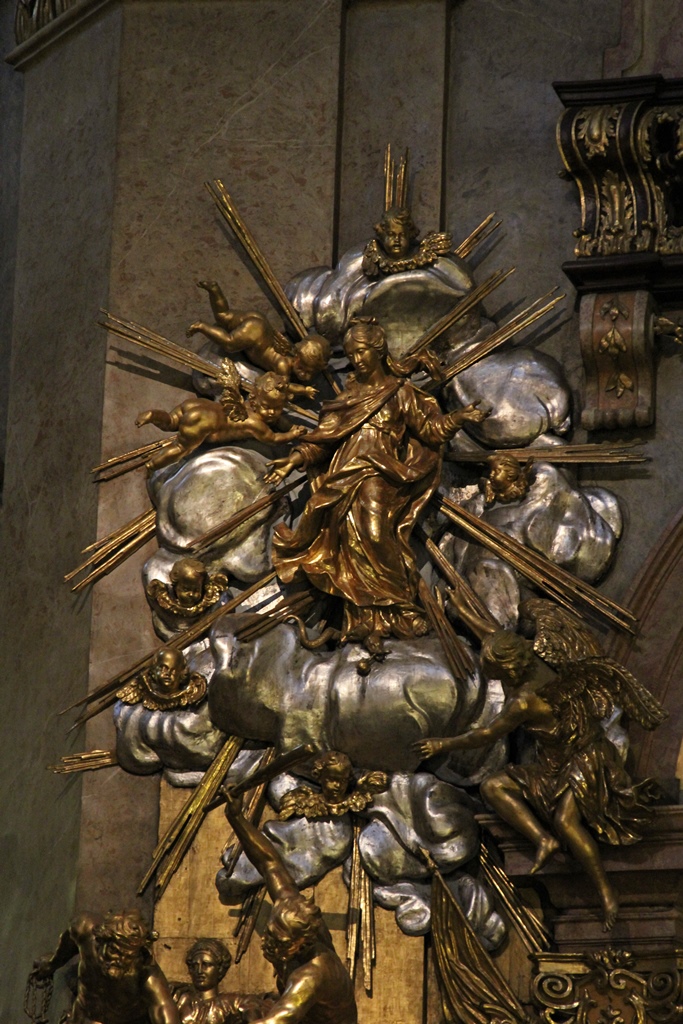
Our Lady of Bunzlau
Along the side of the church, as with many Catholic churches, are altars devoted to
saints. But since the church is so small, there aren't very many of them, in fact
only six. Here are some of them:
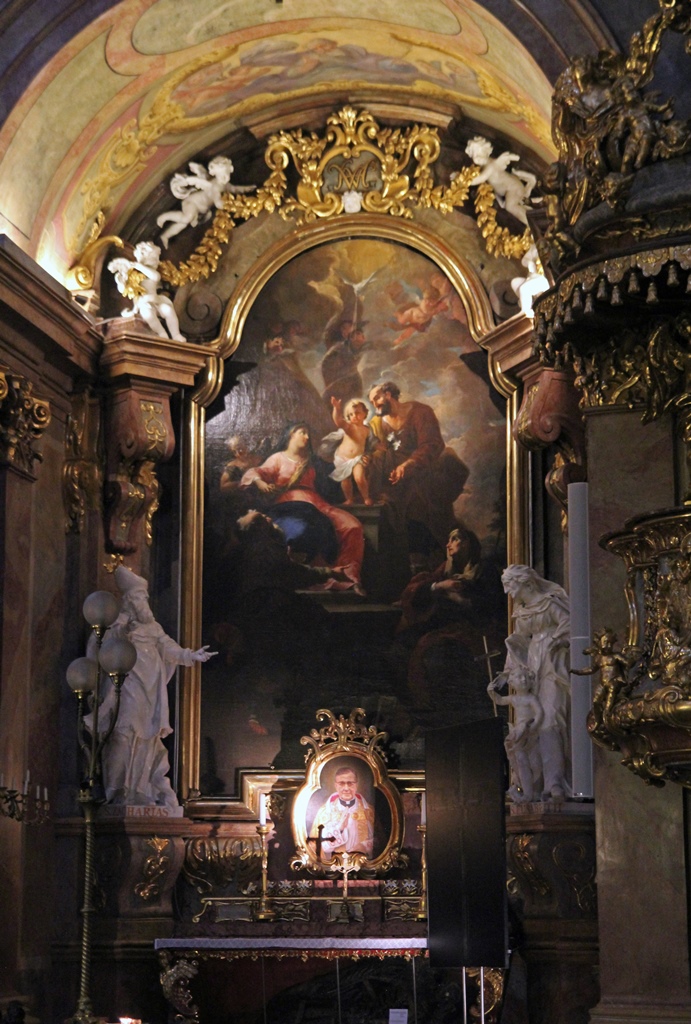
Altar of the Holy Family
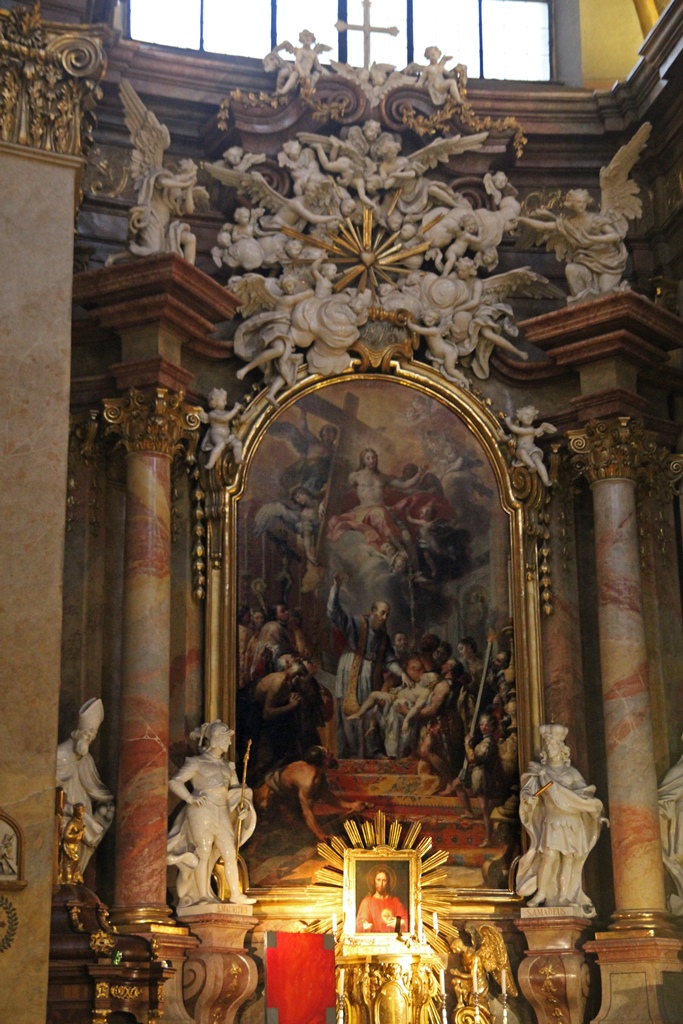
Altar of St. Francis of Sales
Jesus of Sacred Heart, Altar of St. Francis of Sales
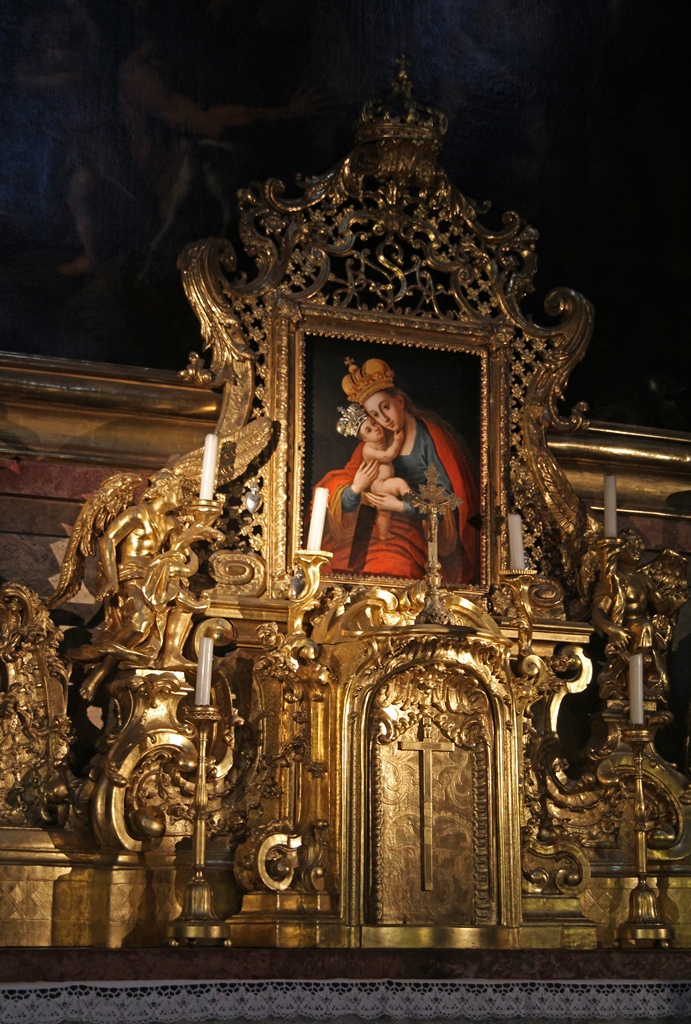
Our Lady of Help, Altar of St. Sebastian
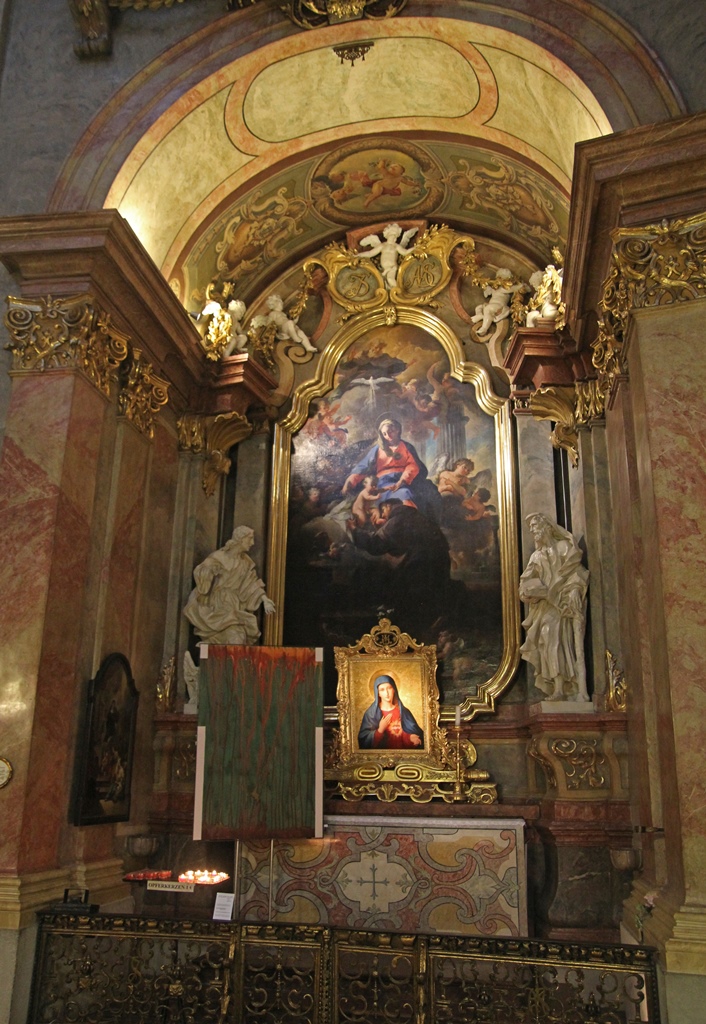
Altar of St. Anthony of Padua
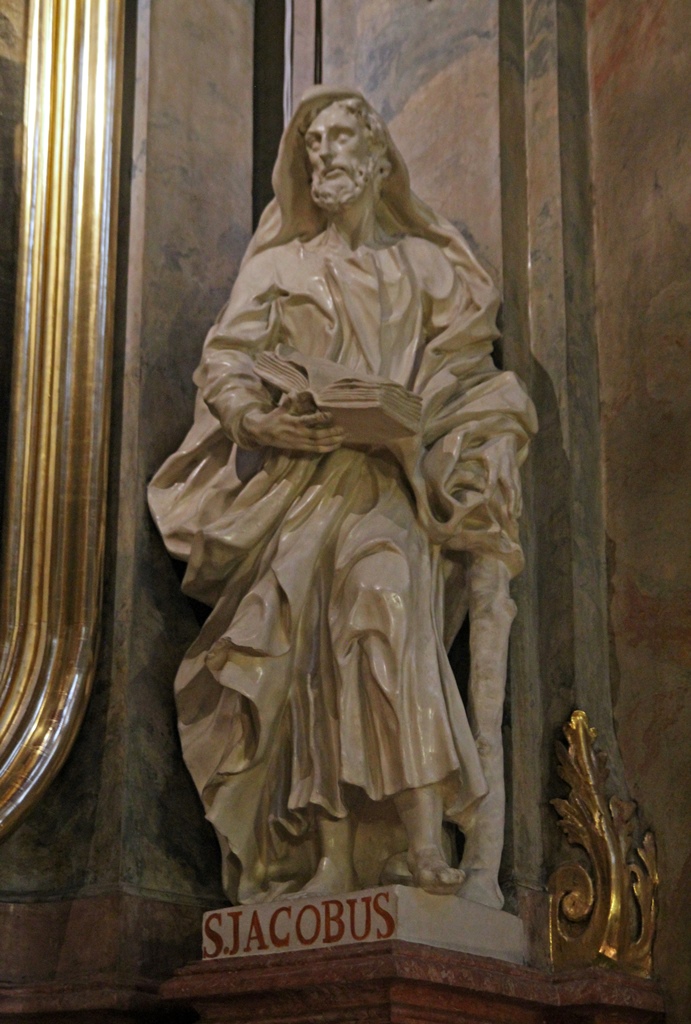
St. Jacob Statue, Altar of St. Anthony
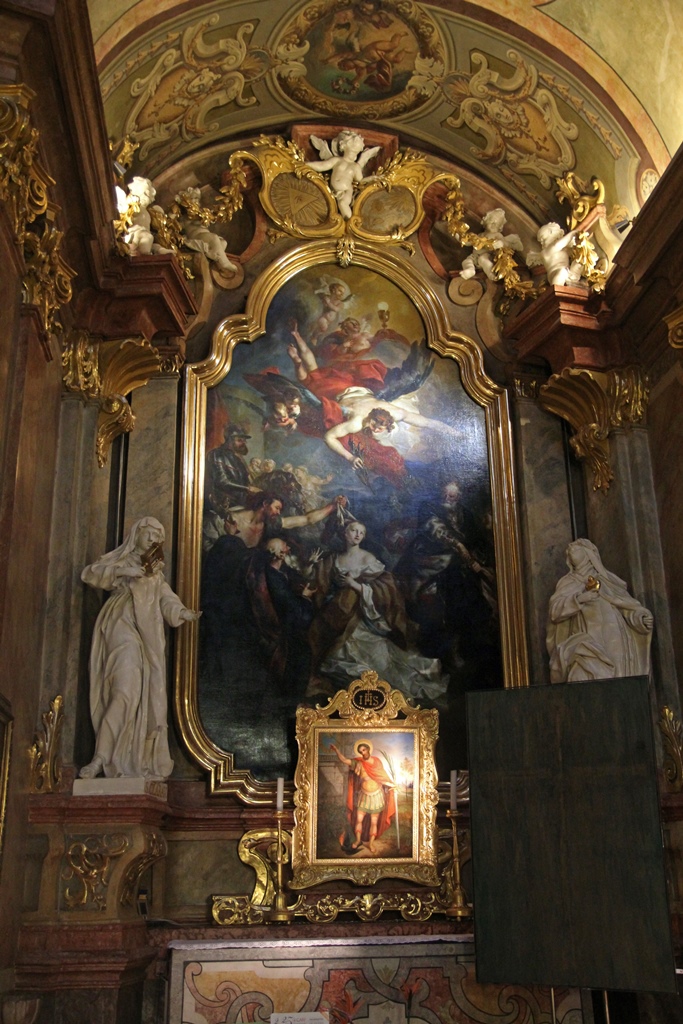
Altar of St. Barbara
Satisfied with enough baroque for one evening, we headed back out into the damp
evening and found a department store where we could do some browsing. Normally
Nella is more interested in this sort of thing than I am, and this was no exception,
but once in a while, some of the differences in merchandise between foreign stores
and comparable stores at home can be interesting.
Lederhosen Rack in Department Store
Eventually we headed back to the hotel for our evening rest. We weren't quite
sure what we would be doing the next day, as the weather was making us play things
by ear. But unknown to us, the first main destination for our day was fated to be
the Albertina Museum.

